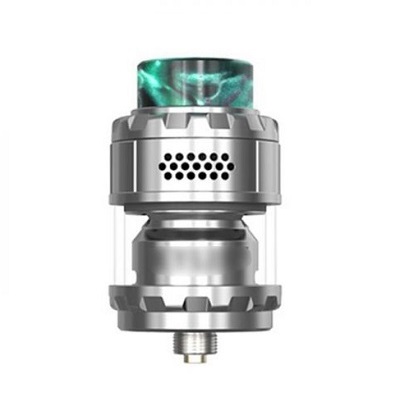
Know your RTA from your RDA and what is Sub-Ohming?
When looking for an RDA (Rebuildable Drip Atomiser), RTA (Rebuildable Tank Atomiser) or Sub Ohm device, there are couple of questions you should ask yourself. Answering these questions will help in your final decision. They basically boil down to these two simple questions:
- Mainly, what do you want to get from the kit?
- Will you need the kit to be mobile, and perform with ease when you are out and about?
When deciding upon which tank to use that will get you the most satisfaction from your vaping experience you must first consider the above questions.
If you are new to vaping, then an RTA and RDA device may be overkill. Though there are several sub-ohm devices suitable for the recently initiated, check our our Sub Ohming Guide by clicking on the link for a more detailed look at Sub Ohming.
You will hear these devices being referred to as atomisers or tanks. They each sit on top of a mod device, but all three have a few unique differences.
Differences
The main difference between the three types of kit are flavour hits, cost, and the ability to build a wick that operates as a coil.
Sub-ohm devices have developed into more powerful kits in recent years. For many it now seems a standard 100 watt is to be expected for all available and new to come kits.
Coils
Sub-ohm devices have ready-made coils too, just plug them in to your tank and you are ready to go, both RDAs and RTAs do not come with this convenience. Instead, both for the RTA and RDA you must build the coil.
There are some advantages to building your own coils, one major standout is the cost saving you make when building your own coils. Another factor is the quality of the e-liquid flavours obtained when using either an RTA or RDA. The flavours are simply better, more heat can be produced when building your own coils too.
The art of coil building has been embraced by many, using your own wire and cotton with some basic tools you are free to start building your own.
Deck
The deck is a term to describe the tank build, as mentioned above; sub-ohm devices come with coils that are ready to use. Building a deck is the art of coil building and is necessary for both RDA and RTAs.
RDA Build

The only hassle that comes with building the RDA coils is that they constantly, it feels once the coil is built, require dripping to ensure the wick is kept saturated.
The flavour is second to none, but the fact RDAs require so much attention does not make them ideal for when you are out and about. If you want to experience flavours that are enhanced with higher temperatures, then the RDA is perfect.
It is a similar story with RTAs too, though they do not need as much attention in terms of needing the wick to be dripped often, they can leak if not wicked 100% correctly. Again, the e-liquid flavour is enhanced with these tanks.
These drawbacks are not really an issue, if you are using your RDA or RTA for home vaping. The benefits to them sure outweigh this minor drawback. For cost effectiveness, and all-round quality vaping then an RTA or RDA is a must.
Topline Differences
Concluding
So, there you have it. Sub-ohms are perfect for the vaper looking for a no fuss vape that is convenient for most pockets. Whilst RTA and RDAs provide the quality in vape liquid flavour, and are more cost-effective, they only fail when it comes down to mobility.
Move over, Obi-Wan, there's a new Master in town. In the realm of vape clouds and coils, where e-juice flavour reigns supreme and watts whip like desert winds, fear not, fledglings, for The Boss has arrived.
Forget flashy tricks and fancy footwork – The Boss's vape wisdom runs deep, seasoned by years of inhaling and exhaling. He's seen trends come and go, mods rise and fall, but his taste for excellence remains untarnished, a beacon in the ever-evolving vape-o-sphere.





